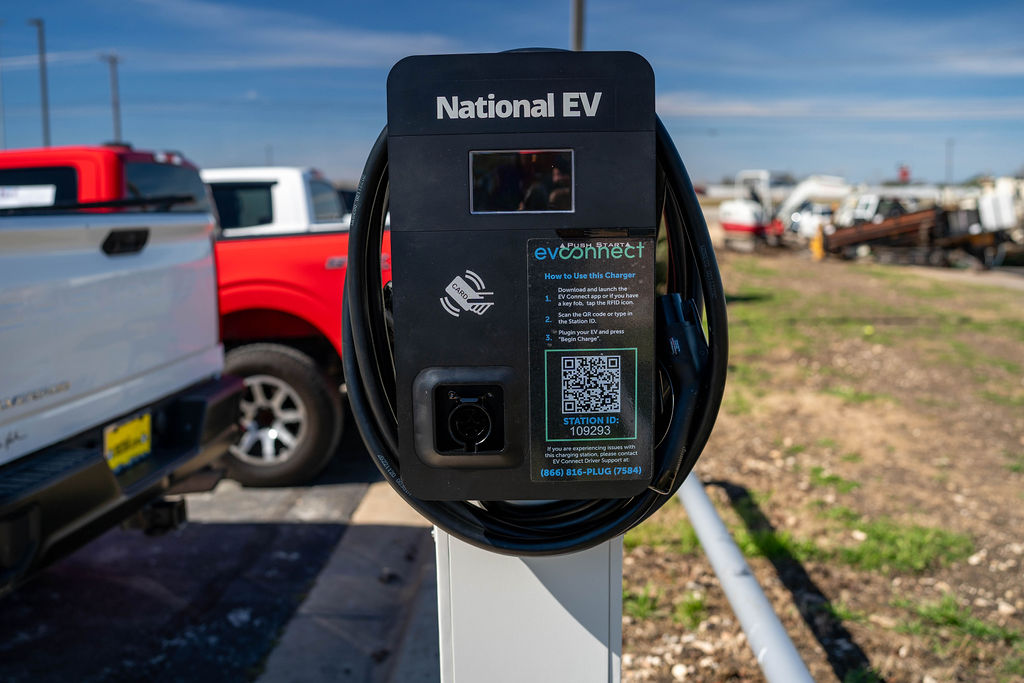The inception of electric vehicles (EVs) heralded the beginning of a new era in automobile technology that significantly reduces carbon emissions. EVs take us a step closer to a world that boasts of a better and more sustainable future.
Table of Contents
ToggleEV Charging Infrastructure
When considering the strides made in sustainable infrastructure, understanding the types of EV chargers is fundamental. Basically, there are two types:
- Level 2 chargers
- Level 3, or rather, fast chargers.
Level 2 chargers, with an average input of 48 amps, are common at residential as well as commercial premises, providing a practical balance between charging speed and infrastructure cost. In contrast, Level 3 chargers offer rapid charging capabilities, essential for high-traffic public locations and fleet operations. This diversity in charging options is crucial for an adaptable and sustainable EV ecosystem, catering to varied needs and promoting widespread EV adoption.
Case Study: Ford Dealership Installation, Georgetown, Texas
This project’s intricacies reveal a deeper layer of sustainability – the coordination with local utility provider Oncor for permission and infrastructure adaptation. This indicated a harmonious blend of technological advancement and environmental consideration for accommodating powerful Level 3 chargers, which required stepping down power and adding additional services.
Sustainability Practices in Installation
As demonstrated in the Georgetown project, directional boring is a prime example of such practices. This technique is, in other words, the horizontal equivalent of directional drilling. It enables the utilities to be placed underground, minimising disturbances on the surface.
Unlike traditional trenching, which involves extensive digging that can significantly disturb the local ecosystem, directional boring creates a small entry and exit point, leaving the surrounding area largely intact.
It allows installers to steer clear of tree roots, waterways, and existing underground utilities in order not to interfere with the natural landscape and avoid environmental damage.
Directional boring also has the benefit of precision, meaning less backfill and less need for landscaping post-installation, further reducing the environmental impact of the installation.
Other sustainable practices in the entire installation process include:
- Recycled Products: Producing the components of the charging station and the infrastructure from recycled products would reduce the carbon footprint during the installation exercise.
- Eco-friendly Conduits and Cables: Using environmentally friendly conduits and cables fabricated from sustainable materials. This helps in eliminating toxic materials, and is yet another brilliant idea for reducing environmental damage.
- LED Lighting for Charging Stations: Incorporating LED lighting that is energy-saving within the charging stations.
- Sustainable Site Planning: Careful planning of the installation site to minimize changes to the landscape. This includes maintaining existing trees and natural water drainage patterns.
- Waste management: Implementing proper waste management strategies to recycle and manage materials responsibly during installation.
These practices exhibit a commitment to environmental stewardship and sustainability. By utilizing these methods, the installation of EV charging infrastructure not only promotes the transition to electric vehicles but also ensures that this transition is in harmony with ecological preservation and sustainability goals.
You should also read: Are EV Charging Stations Safe?
The Role of Renewable Energy in EV Charging Infrastructure
Moreover, there is a growing trend where charging stations are connected to renewable sources like solar panels or wind turbines. This ensures that renewable sources continually supply green energy.
Not to forget, the use of energy storage systems such as batteries tends to optimize this setup by storing excess renewable energy. This not only increases the efficiency of charging stations but also moves them closer to eco-friendly practices.
Smart Grid Technology and its Impact on EV Infrastructure
The importance of smart grid technology is underscored by its impact on electric vehicles charging infrastructure.
Stations using smart grid features in their modalities can best manage energy to draw power during off-peak hours. This would help better deal with the load on the grid and ensure that charging gets more energy efficient and sustainable.
Smart grids also help in real-time monitoring and management of the charging stations. This promotes better maintenance, forecasting, and distribution of power. Moreover, it enables the integration of renewable sources into the grid to allow EVs to charge with the greenest power.
Government Policies and Incentives Towards Sustainable EV Infrastructure
Various governmental policies and incentives play a key role in actualising sustainable EV charging infrastructure.
Policies and incentives are indispensable to encourage manufacturers and consumers to invest in cleaner technologies.
Governments across the globe are implementing various initiatives to promote the use of electric cars. This will also to increase the establishment of sustainable charging stations. Measures such as tax credits, some form of grants and even rebates are tools governments around the world are using.
In addition, some regions have also set aggressive targets to eliminate or reduce vehicle emissions. This also contributes to the growth of EV infrastructure.
These policies would encourage technological innovations and improve the availability of EVs and sustainable charging solutions for the general public.
The continued support and dedication from government sectors are necessary to make the sustainable infrastructure for EVs popular among the public. This will help achieve the world’s environmental targets.
Conclusion
In essence, the push towards sustainable electric vehicles charging infrastructure is a crucial stride towards a greener future. Embracing renewable energy, smart technologies, as well as eco-friendly installation practices, are pivotal in this journey. Nationalev.com exemplifies such a commitment, leading, and even daring in the quest of integrating these sustainable solutions.



